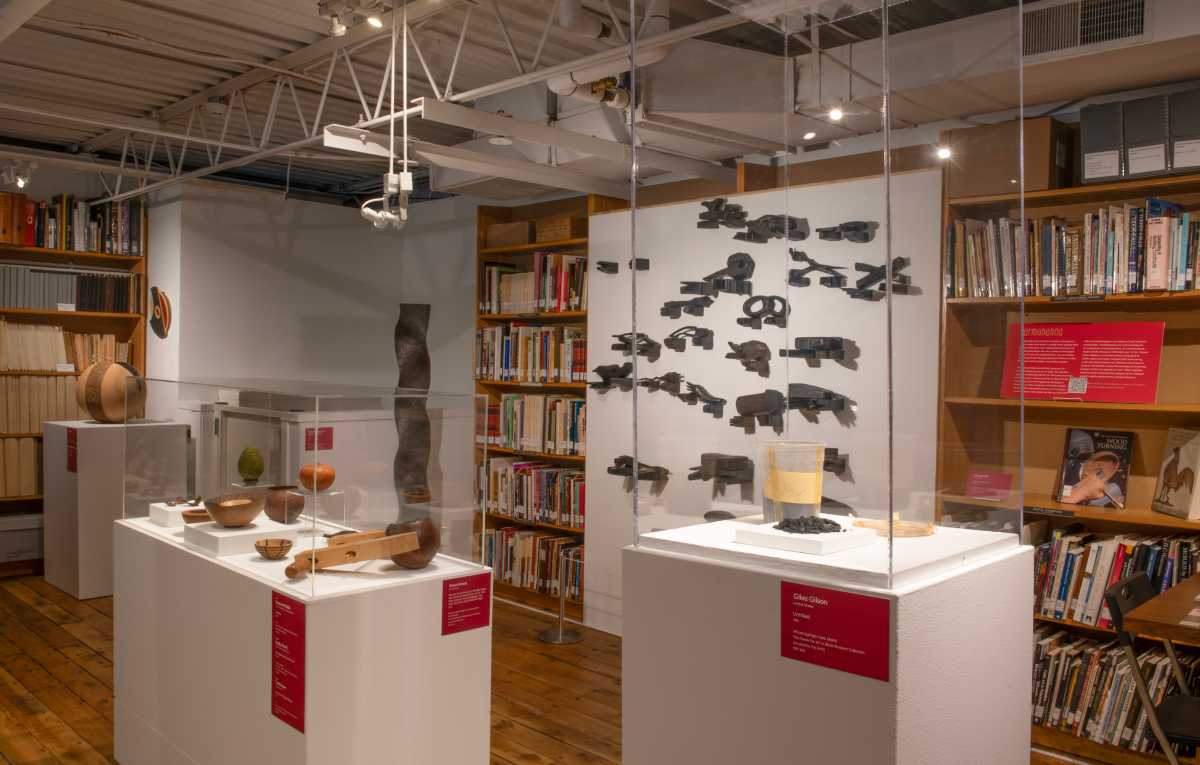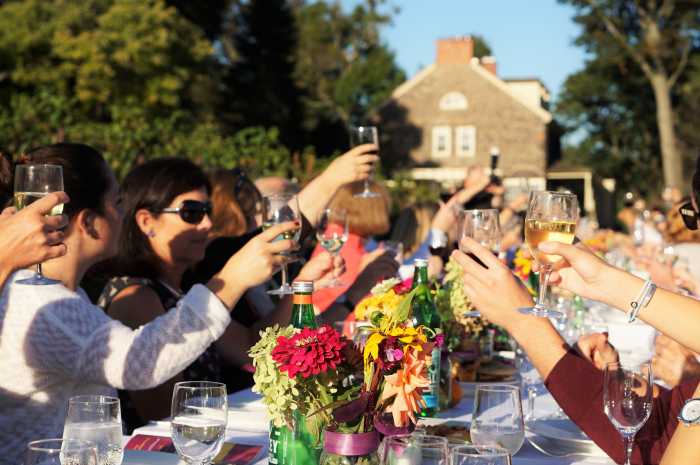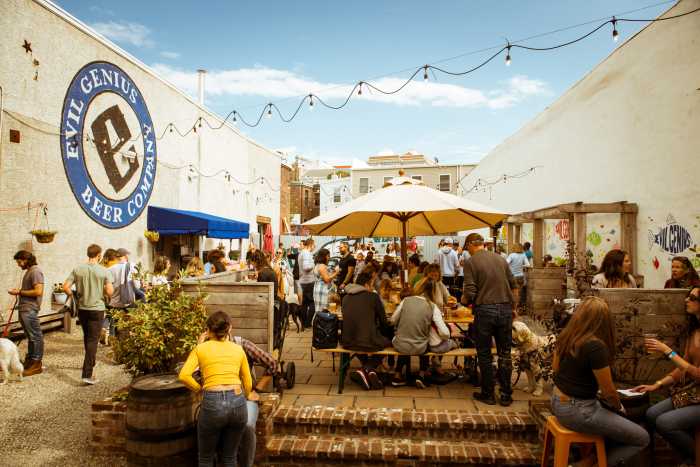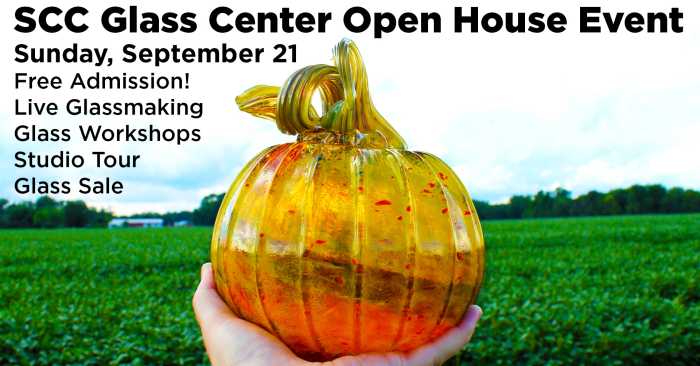Fire can be destructive, but it can also be used as a tool for creation. The Museum for Art in Wood’s latest exhibition, ‘Cinders: Burned, Scorched, & Pyrographed Works in Wood’, highlights the tension between fragility and permanence through a series of fire-treated pieces of art.
Now through Sept. 21, visitors can view 26 objects by 22 artists — many drawn from the museum’s permanent collection. Curated by Assistant Curator Amrut Mishra and housed in the Museum’s Fleur and Charles Bresler Research Library, ‘Cinders’ explores the ways wood can be used in both expected and surprising ways.
Mishra spoke with Metro about how he curated pieces for the show, explains the art of pyrography, and what he hopes visitors will take away from the experience.
How did the idea of ‘Cinders’ come about? Was there a particular artist or piece that inspired the theme?
My inspiration for ‘Cinders’ developed over time, as I began to notice the diverging ways that artists in our collection had experimented with fire. At first, I was struck by the brazenness of an untitled work by Giles Gilson. In the early 1980s, the Museum’s former director, Albert LeCoff, challenged artists to develop an artistic design statement with two pieces of wood. Offering a tongue-in-cheek response, Gilson burned the wood pieces in a stove, presenting a plastic container filled with the resulting ashes for his statement.
From here, I found that juxtaposing the powdery, darkened ash of Gilson’s piece to the delicate and refined pyrographic techniques of Melissa Engler’s ‘Verdant’, for instance, could stage an interesting conversation about how artists harness fire for different ends.
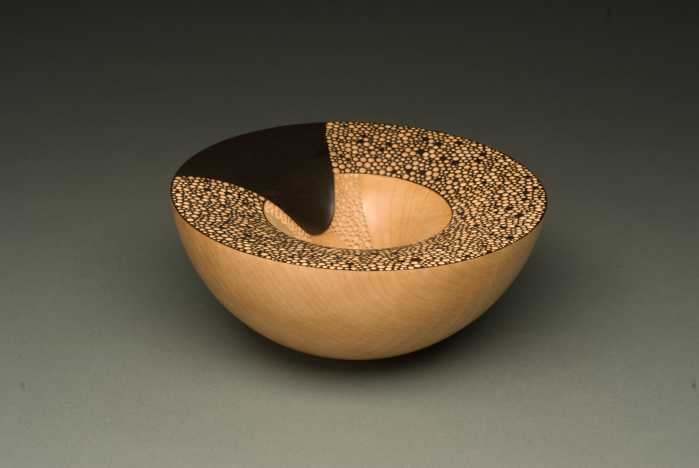
Can you share a bit about pyrography — how artists use the technique or what visitors might notice in the works on view?
Pyrography is a fascinating technique that demands dexterity and practice. Broken down, the word pyrography means drawing with fire (the Greek roots “pyro” and “graph”) and to achieve this, artists will use what’s called a wood burning pen.
A wood burning pen is a specialized tool composed of a stylus and an interchangeable metal tip which is heated with electricity. As an artist applies pressure with the pen, the wooden surface will singe, leaving behind a darkened line. By adjusting the temperature of the metal tip or the speed and pressure of the pen-stroke, artists can achieve different line-weights ranging from imperceptibly thin to garishly thick. Finally, if an artist lingers on a spot for too long, the pen will leave a large burn-mark that might interrupt an otherwise smooth line.
Ultimately, I hope that viewers might appreciate the complex linework that can be achieved through pyrography, exemplified in pieces like John H. William’s ‘Solar Storm.’
What criteria were taken into consideration when choosing the art and artists for ‘Cinders’?
At a basic level, I chose artworks that explored the range of techniques relating to fire, including pyrography, scorching, and burning. Because there is strong representation of these techniques in our permanent collection, I narrowed down the artworks in the exhibition to explore themes related to fragility and permanence which I had noticed across the selection. On the one hand, some artists utilize fire to explore the fragility in wood as a material, or in the vulnerability of the human form; in contrast, some artists use the unique properties of scorching to showcase how fire can act as a preservative to wood.
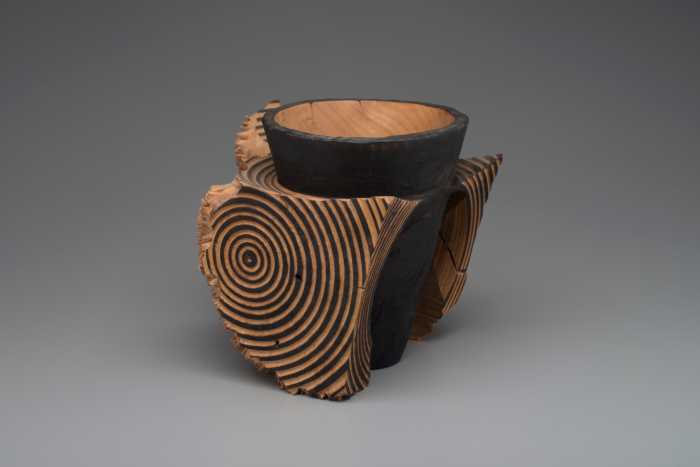
How does ‘Cinders’ support the museum’s mission and educate visitors about wood as an art form?
With exhibitions focused on the permanent collection, I try to emphasize the versatile qualities of wood as an artistic medium. While many visitors might arrive at the museum expecting the surface detail of a vivid grain pattern or the curvature of an elegant bowl, they may be less aware of techniques like pyrography. Even when considering the varied scales artists can achieve in wood, ‘Cinders’ exhibits pieces ranging from the intimate to the monumental; from a carved sculpture less than a millimeter thick to an installation occupying the width of two bookshelves.
Also, because ‘Cinders’ resides in the gallery of the Museum’s Fleur and Charles Bresler Research Library, visitors who view the exhibition can browse the museum’s vast catalogue of woodworking and craft literature.
For people who cannot visit the museum in person, how can they utilize the website to experience ‘Cinders’?
There are two ways to experience the artworks in ‘Cinders’ through the web. First, a viewer can visit the ‘Cinders’ exhibition page on the web platform Smartify. Smartify has a list of artworks in the exhibition as well as accompanying information and images. Alternatively, viewers can utilize the museum’s “Advanced Search” function on our webpage to search for the included artists listed for the exhibition.
What kind of reactions or questions are you hoping visitors will leave with after seeing this exhibit or the museum as a whole?
Above all, I hope that visitors leave ‘Cinders’ and the Museum for Art in Wood with a sense of curiosity. Whether it’s curiosity about how a piece of art was made, curiosity about what an artist was trying to convey, or curiosity about what possibilities exist in wood-based art.
As a curator, one of the most fulfilling aspects of ‘Cinders’ exhibition run has been the exclamations of wonder and enthusiasm that I overhear when visitors view artwork like Miriam Carpenter’s ‘Feathers’. Because this sculpture has the same size, texture, and delicacy as an actual feather, visitors often express incredulity that the sculpture is entirely composed of wood. After experiencing the museum’s exhibitions and programming, I hope that visitors leave with an appreciation for artwork, generally, and a curiosity-driven desire to encounter art that may challenge them.
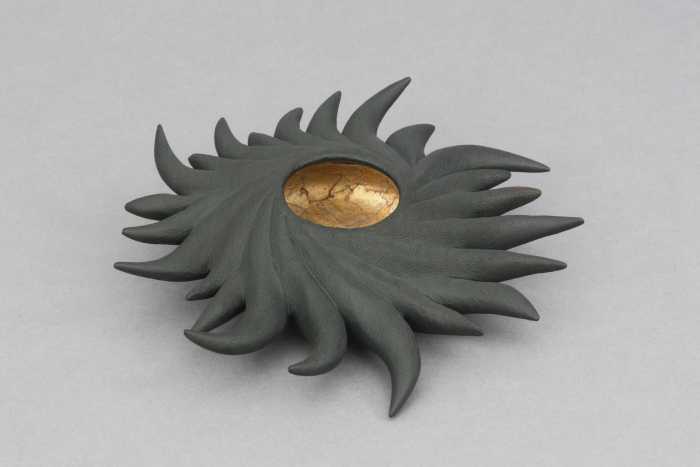
Know before you go:
Admission to the Museum for Art in Wood is free. Along with rotating exhibitions (‘The Longest Distance Between Two Points’ by Katie Hudnall ends this month), guests can explore the permanent collection which features over 1,200 objects, plus interactive features like QR codes and the Smartify platform, as well as the Museum’s comprehensive research library with thousands of books, artist files, and archival materials.
Museum for Art in Wood is located at 141 N. 3rd Street, and is open Wednesday through Sunday, from noon to 5 p.m.
For more information, visit museumforartinwood.org



